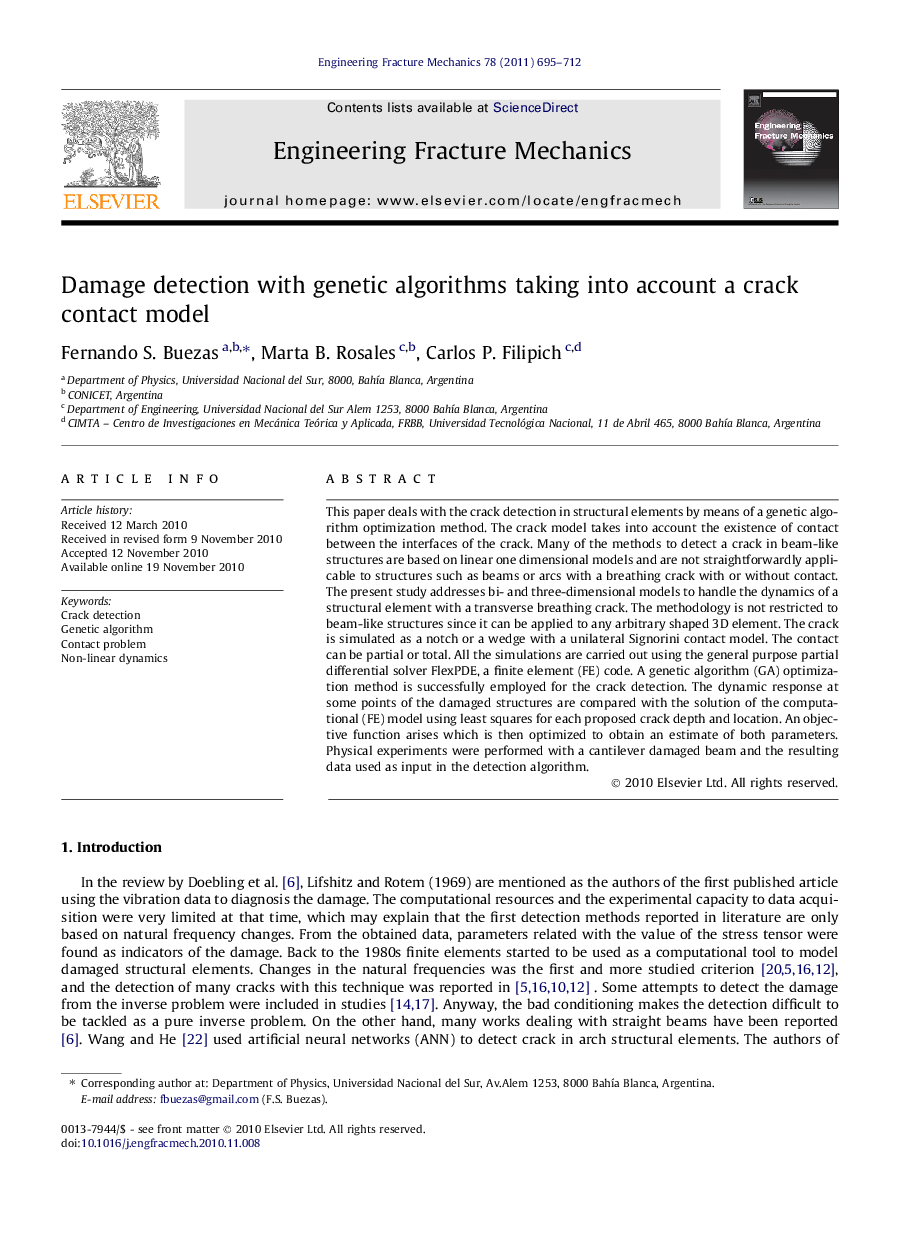| Article ID | Journal | Published Year | Pages | File Type |
|---|---|---|---|---|
| 771178 | Engineering Fracture Mechanics | 2011 | 18 Pages |
This paper deals with the crack detection in structural elements by means of a genetic algorithm optimization method. The crack model takes into account the existence of contact between the interfaces of the crack. Many of the methods to detect a crack in beam-like structures are based on linear one dimensional models and are not straightforwardly applicable to structures such as beams or arcs with a breathing crack with or without contact. The present study addresses bi- and three-dimensional models to handle the dynamics of a structural element with a transverse breathing crack. The methodology is not restricted to beam-like structures since it can be applied to any arbitrary shaped 3D element. The crack is simulated as a notch or a wedge with a unilateral Signorini contact model. The contact can be partial or total. All the simulations are carried out using the general purpose partial differential solver FlexPDE, a finite element (FE) code. A genetic algorithm (GA) optimization method is successfully employed for the crack detection. The dynamic response at some points of the damaged structures are compared with the solution of the computational (FE) model using least squares for each proposed crack depth and location. An objective function arises which is then optimized to obtain an estimate of both parameters. Physical experiments were performed with a cantilever damaged beam and the resulting data used as input in the detection algorithm.
